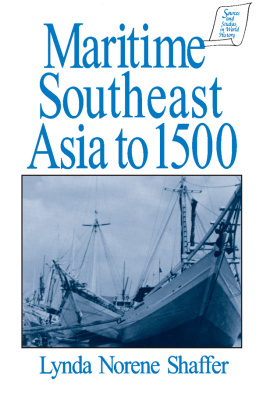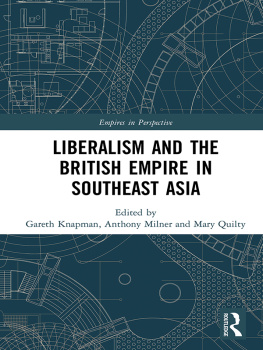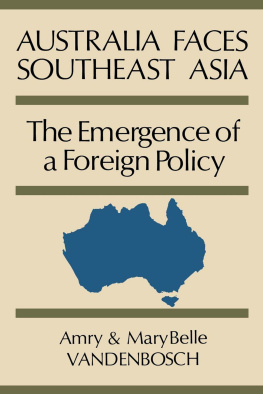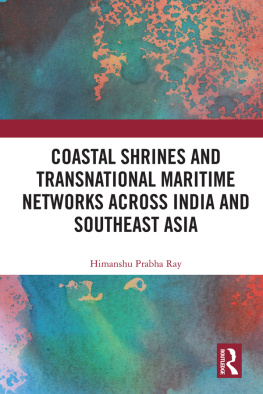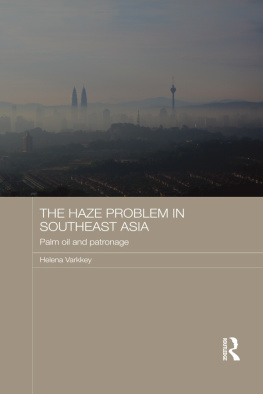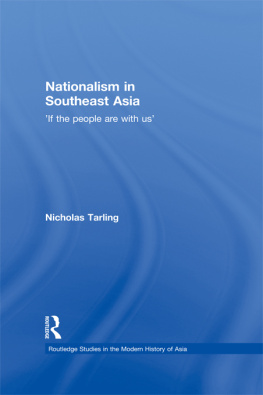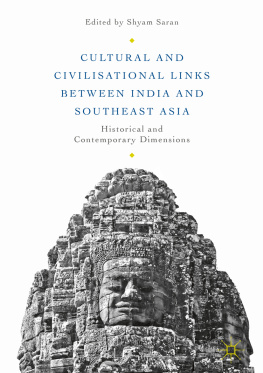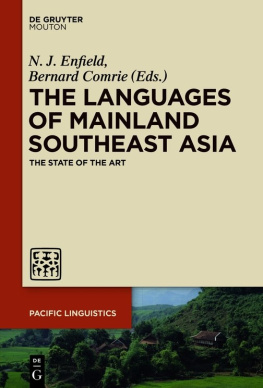Maritime Southeast Asia to 1500
 Kevin Reilly, Series Editor
Kevin Reilly, Series EditorMARITIME SOUTHEAST ASIA TO 1500
Lynda Norene Shaffer
THE ALCHEMY OF HAPPINESS
Abu Hamid Muhammad al-Ghazzali translated by Claud Field, revised and annotated by Elton L. Daniel
LIFELINES FROM OUR PAST
A New World History
L. S. Stavrianos
NATIVE AMERICANS BEFORE 1492
The Moundbuilding Centers of the Eastern Woodlands
Lynda Norene Shaffer
GERMS, SEEDS, AND ANIMALS
Studies in Ecological History
Alfred W. Crosby
BALKAN WORLDS
The First and Last Europe
Traian Stoianovich
AN ATLAS AND SURVEY OF SOUTH ASIAN HISTORY
Karl J. Schmidt
THE GOGO: HISTORY, CUSTOMS, AND TRADITIONS
Mathias E. Mnyampala
Translated, introduced, and edited by Gregory H. Maddox
WOMEN IN WORLD HISTORY:
Volume 1Readings from Prehistory to 1500
Volume 2Readings from 1500 to the Present
Sarah Shaver Hughes and Brady Hughes
Maritime Southeast Asia to 1500
Lynda Norene Shaffer
First published 1996 by M.E. Sharpe
Published 2015 by Routledge
2 Park Square, Milton Park, Abingdon, Oxon OX14 4RN
711 Third Avenue, New York, NY 10017, USA
Routledge is an imprint of the Taylor & Francis Group, an informa business
Text copyright 1996 Taylor & Francis. All rights reserved.
No part of this book may be reprinted or reproduced or utilised in any form or by any electronic, mechanical, or other means, now known or hereafter invented, including photocopying and recording, or in any information storage or retrieval system, without permission in writing from the publishers.
Notices
No responsibility is assumed by the publisher for any injury and/or damage to persons or property as a matter of products liability, negligence or otherwise, or from any use of operation of any methods, products, instructions or ideas contained in the material herein.
Practitioners and researchers must always rely on their own experience and knowledge in evaluating and using any information, methods, compounds, or experiments described herein. In using such information or methods they should be mindful of their own safety and the safety of others, including parties for whom they have a professional responsibility.
Product or corporate names may be trademarks or registered trademarks, and are used only for identification and explanation without intent to infringe.
Library of Congress Cataloging-in-Publication Data
Shaffer, Lynda, 1944
Maritime Southeast Asia to 1500 / Lynda Norene Shaffer.
p. cm.(Sources and studies in world history)
Includes bibliographical references and index.
ISBN 1-56324-143-9 (hardcover : alk. paper)
ISBN 1-56324-144-7 (paperback : alk. paper)
1. Asia, SoutheasternHistory.
I. Title. II. Series.
DS525.S471995
959.01dc209536663
CIP
ISBN 13: 9781563241444 (pbk)
ISBN 13: 9781563241437 (hbk)
Dedicated first of all to Karen Lanette, small consolation for the tribulations of being the youngest
to Lance Neal, Lonna Nancy, and Lewis Newell III
to our mother, Lola Norene
and to the memory of our father, Lewis Newell II
CONTENTS
It is with considerable pleasure that I introduce this volume, Lynda Shaffers second title in the Sources and Studies in World History series. Together with Native Americans Before 1492 (1992) and a forthcoming book on West Africa, Maritime Southeast Asia develops a miniseries of books by Professor Shaffer on important but often neglected regions in world history studies and courses. A projected companion volume will explore some of the structural similarities of these three regions.
Like her earlier study of North America, this work on islands and islandlike communities of Southeast Asia, especially what is today Indonesia, not only shows world historians the importance of the region; it also shows the specialist how an understanding of world history can better define the ebb and flow of regional history. This work vastly improves our understanding of both Southeast Asian history and world history.
Few authors have been able to combine extensive research on the region with global-ranging expertise to such effect. The result is a dazzling array of concise explanations and fascinating meditations on such topics as Malayo-Polynesian migrations, the relation between Central Asian climate and monsoons, land and maritime silk roads, plagues and commerce, Buddhism, Indianization, and indigenous culture, Turko-Mongolian Islam, and Sufism. These topics, however, are not asides, but provide skeins which, gracefully woven into the tapestry, elucidate Southeast Asian history in ways that purely local knowledge cannot.
In short, this is a history of maritime Southeast Asia for world historians. But it is also a beautifully conceived, lucid, and thoughtful history of island Southeast Asia. With all of its attention to such global matters as crops and language groups, the silk and spice trade, African sailors and Chinese porcelains, scriptural religions and acculturation, merchants and royal houses, this is also a straightforward narrative, rich in traditional political history, which takes us from Funan on the Mekong delta to Sumatran Srivijaya to the kingdoms of Java (ca. 7001200) to the Muslim realms of Malacca and Mataram, Java, before 1500.
Kevin Reilly
Several years ago, after disembarking from a plane at Chicagos OHare Airport, I was traversing one of the long halls that leads to the hub of the American Airlines terminal. At one point I happened to glance upward and was pleasantly surprised to see a huge globe suspended from the ceiling, a mostly transparent world in which brass-colored land masses were held at the surface, amidst oceans of air. It is a beautiful work of art and for the most part an accurate rendition of the planet, but as I stood staring I realized that something was awry. Indonesia, which now has the fourth largest population in the world, and the Philippines, islands that the United States once treated as its own territory, were missing. Perhaps the artist had decided that shaping and attaching so many islands was too much bother. I, however, was troubled by this essentially American faux pas.
Despite the considerable amount of scholarship on Southeast Asia published since the 1960s, courses about the region (with the possible exception of those about the war in Vietnam) are absent from the curriculum of most colleges and universities in the United States. The region is also neglected in most world history courses. Such neglect might suggest that the region has played an insignificant role in major hemisphere-wide or global events, but that was not the case in the past, nor is it true today.
Why much of Southeast Asian history, especially the history of its maritime realm, seems to be missing from the American consciousness is in itself an interesting historical question. With the exception of Thailand, much of the region was colonized, and British, Dutch, and French authorities tended to limit U.S. involvement in their colonies, be it commercial or missionary. The Philippines, is, of course, an exception to this generalization, and our continuing ignorance of these islands, their history, and U.S. relations with their peoples cannot be explained in this way. Even the U.S. involvement in Vietnam and other mainland nations in the decades following World War II does not seem to have spurred any general awareness of the regions culture or history. If Jacqueline Kennedy, fluent in French and influenced by the French awareness of Southeast Asia, had not visited Cambodias Angkor Wat, one wonders if anyone in the United States, aside from the several hundred scholars who study Southeast Asia, would ever have heard of this world heritage site. It seems doubtful, given that equally important sites are rarely, if ever, mentioned in the world history literature.



